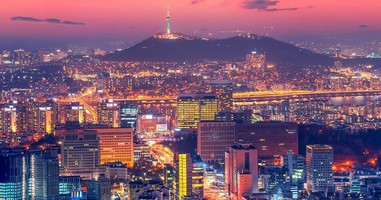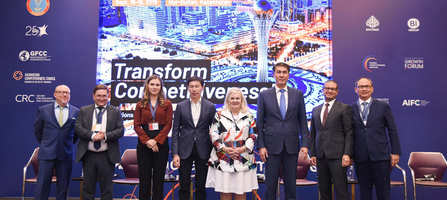
Blogs
INDUSTRY CLUSTERS: 1+1=3?
June 25, 2020


Madina Kabdualieva
senior analyst
If the problem persists, look at it from a different angle. In the case of spatial policy, it becomes less and less relevant to consider the development of the region through the prism of a specific industry – the cluster approach picks up the slack.
For most, the first associations with the word "cluster" are associated with Silicon Valley in San Francisco, City of London, and the Digital City in Seoul. However, there is often limited understanding of an industry cluster.
The purpose of this post is to conduct a kind of "campaign against illiteracy" on industry clusters, answering 3 main questions.
1. What Is A Cluster?
Clusters are geographical concentrations of related industries. Clusters are divided into two types: tradable and local, depending on the category of industries that belong to it.
The first category includes industries that produce goods and services that are later sold to other regions and countries. The concentration of employment varies significantly from region to region. Examples: processing of non-ferrous metals and alloys, car manufacturing, releasing computer games.
The second category includes industries that create goods and services mainly for the local market. Their competition with other regions is limited. In these industries, employment is fairly evenly distributed across the country and is proportional to the population of the region. The majority are services: public administration, healthcare, public utilities, many types of retail trade, construction.
The most interesting are the tradable clusters: they determine the competitiveness of the region, determine the level of its innovation and "pull" local industries, creating demand for their goods and services. According to the Brookings Institution, the presence of a developed tradable cluster is necessary for the emergence of a global city in the country.
2. What Turns A Group Of Industries Into A Cluster?
In addition to geographical attachment, the linkages between the cluster industries are manifested through the general skills required for production as well as similarities in response to changes in supply and demand in the market.
For this reason, cluster analysis may contravene with existing industry classifiers, such as NAICS in North America and NACE in Europe (similar to Kazakhstan's CCЕA), which focus on similarities in the production processes of goods and services.
Standard classifiers also do not take into account the connections of industry enterprises with other organizations: clusters may include universities, think tanks, and trade associations that provide educational, informational, research, and technical support. Historically, many clusters have been formed around educational institutions that "supply" the region with qualified personnel.
3. Why Is The Development Of Clusters More Profitable Than The Development Of Individual Industries?
Systematics wins over chaos. Despite globalization, location still matters. When each industry operates independently of the other, and there is no single point of concentration, there is often a "stretching" of the production chain, in search of a more favorable tax regime, optimization of utility and labor costs. The company itself is located in one location, the personnel it needs are located in another, and the production facilities are located in a third. All this imposes additional costs on the business: management, recruitment, and transportation. Due to the inability to observe the entire process, there is no necessary trust, which increases transactional costs. State "injections" are losing their effectiveness: support comes out fragmented and requires large resources.
As a cluster develops, due to geographical proximity, businesses have improved access to suppliers and talents, specialized information, and supporting institutions. In such a business environment, knowledge is accumulated more effectively and productivity increases: the motivation for innovation increases, businesses start working for their reputation to remain in the networks, which strengthens trust. The state can pursue regional policy in a targeted manner: for example, to provide the necessary infrastructure not for individual enterprises throughout the country, but for a specific region where the cluster is located.
Sources:
1. Porter, M. (2003). The Economic Performance of the Regions.
2. Brookings institution. (2016). New Definition of Global Cities.
all publications











